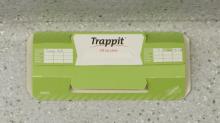Integrated Pest Management
What you will need:

Transcript
Getting started
I am going to talk to you about how to start an Integrated Pest Management or IPM Program at your museum.
An IPM program aims to prevent pest damage by monitoring insect populations and using strategies to make your collection less attractive to insects.
What not to do
It is not recommended that you have your building sprayed by a pest controller, or use over the counter remedies like insect sprays or mothballs. The use of chemicals should be avoided wherever possible. Not only are they harmful to your health, but they can also cause damage to the environment and your collection.
Many people have a natural method of pest control that they swear by, such as lavender bags or peppercorns. These are not recommended as they may repel one pest, while being highly attractive to another.
How to avoid a pest problem
These are some of the main methods to avoid a pest problem in your collection:
- Vacuum stores and display areas regularly as dust attracts insects.
- Food and drink should be restricted to kitchen areas, and never taken into collection storerooms. Rubbish bags containing food scraps should be placed in an outside bin at the end of each day.
- Avoid bringing in flowers, pot plants and animals into your collection space.
- Newly acquired or borrowed objects should be quarantined before being placed near your collection as they may contain unseen infestations. If you do not have room for a dedicated quarantine area the objects can be securely bagged and inspected for insects after a few days. Using a piece of white card under an object will make it easier to see any insect debris that will signal insect activity.
- Objects should be brush vacuumed before being stored in order to remove dust and any previous insect debris. This will make them less attractive to insects, and make it easier to identify new infestations.
- Ensure your building is well sealed. Use draught stoppers, insect screens and weather strips to prevent insects having easy access. Keep doors and windows closed as much as possible
- Keep gutters clean, and keep plants near your building to a minimum. Remove any fallen leaves or rubbish around your building.
Use sticky traps
The easiest way to monitor insect populations in your museum is to use sticky traps. These come in several styles.
Unless you know you have a significant problem, it is best to use the plain sticky traps, rather than those with baits or attractants, as those can attract insects in from outside your building.
Traps should be placed close to all doors, windows, drains, food preparation areas, and any heat, air, and water sources. They should also be placed at regular intervals around display and storage areas. Insects generally prefer dark areas that are close to walls and furniture.
Log your findings
Mark the insect traps with a number and a date, then record their position on a floor plan.
Inspections should be carried out at least every 3 months. Record your findings in a logbook. This should include the date, the position of the trap, and the number and type of insects.
Replace the sticky traps once they have trapped insects, as they will become bait for other insects. This will allow new insects to enter without crossing over the sticky surface. Traps that have become clogged with dust or debris should also be discarded.
Looking at position of the insects caught in your traps may indicate the direction of infestation. The development stage of the caught insects can help identify whether it is an old or new infestation. A mixture of stages of insects will indicate an old infestation; while in a new infestation there will mainly be nymphs.
Common insects
It is a good idea to familiarise yourself with commonly seen insects that cause damage to heritage collections.
- Silverfish. These eat cellulosic materials such as paper, books, and cotton.
- Carpet beetles and clothes moths prefer protein-based materials such as fur, feathers, silk and wool. It is the larval stages of these insects that do the damage, but they can be very difficult to spot.
- Cockroaches will pretty much eat anything and often cause staining.
- Timber borers can be very difficult to see as they can take years to emerge from inside the wood. Fresh frass – insect droppings that resemble fine sawdust – are a sign that you have a fresh infestation. Borer holes that were painted over during the production of a wooden artefact are generally not a cause for concern.
- Some insects such as millipedes and large moths may be a seasonal problem in your collection. While they do not eat collection materials, their dead bodies should be regularly removed so that they do not provide food for other insects.
- Insects such as silverfish and crickets may indicate a high humidity problem, which should be investigated.
Handy hints
Starting an Integrated Pest Management program is recommended to control any pest infestations that may arise.
Thanks for listening.
Image Credits
Silverfish
Photo credit: JR Guillaumin via Visualhunt.com / CC BY-SA
Carpet beetle - Anthrenus verbasci
Photo credit: JR Guillaumin via VisualHunt / CC BY-SA
Clothes moths - Tineola bisselliella
Photo credit: TEIA - 台灣環境資訊協會 via Visualhunt / CC BY-SA
Timber Borers - Hylotrupes bajulus
By Siga (Own work) [GFDL (http://www.gnu.org/copyleft/fdl.html) or CC BY-SA 3.0 (http://creativecommons.org/licenses/by-sa/3.0)], via Wikimedia Commons. Image
Portuguese millipede
Image copyright WA Museum Portuguese millipede
American cockroach
Gary Alpert at the English language Wikipedia [GFDL (http://www.gnu.org/copyleft/fdl.html), CC-BY-SA-3.0 (http://creativecommons.org/licenses/by-sa/3.0/) or CC BY 2.5 (http://creativecommons.org/licenses/by/2.5)], via Wikimedia Commons. Image
Large Moth - Psilosticha pristis
Photo credit: dhobern via Visual Hunt / CC BY












